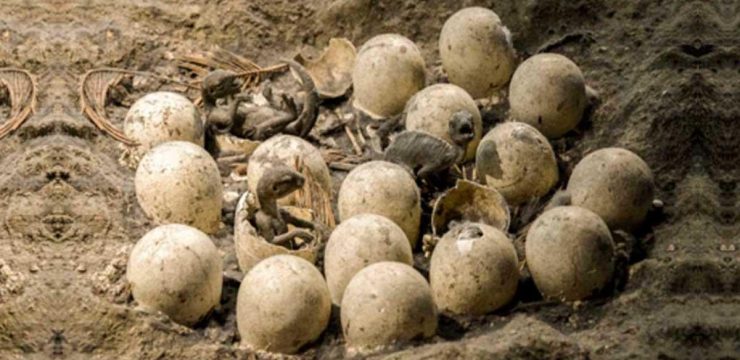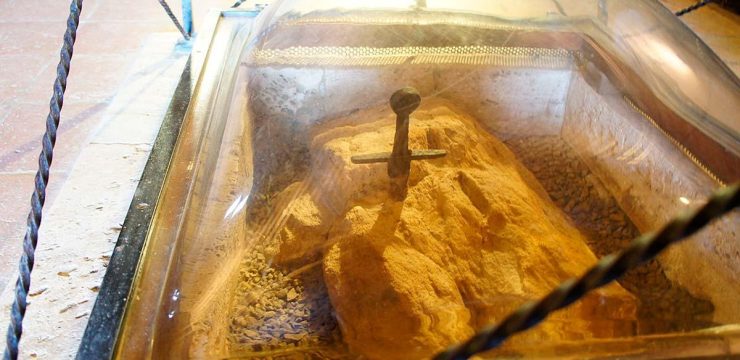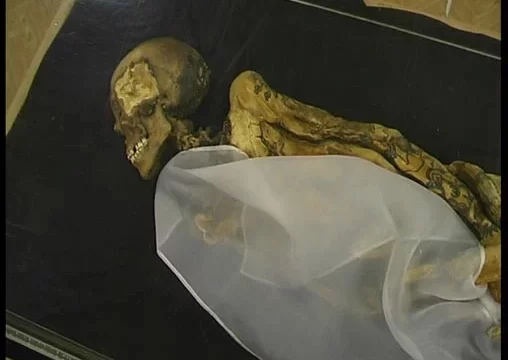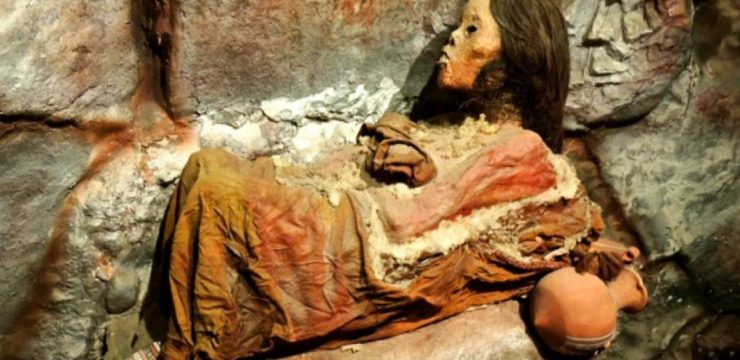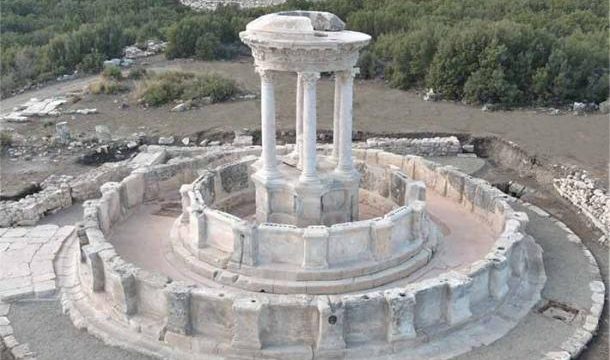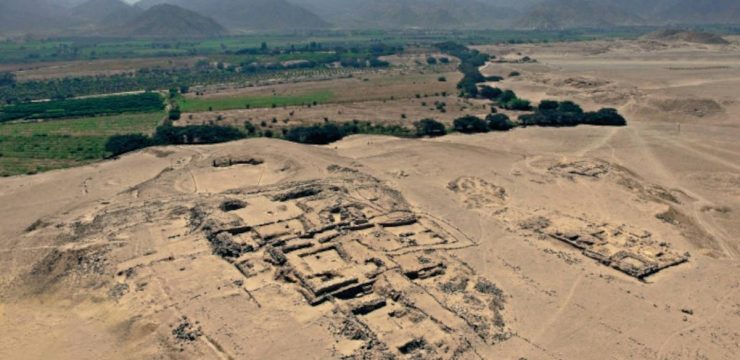A chilling archaeological discovery in Peru has unearthed the remains of 76 children believed to have been sacrificed over four and a half centuries ago. These findings, recently revealed by a team of experts working at the Pampa La Cruz site in the Huanchaco district, add to a growing body of evidence surrounding the dark and complex practices of the ancient Chimu civilization. With this latest discovery, the total number of sacrificed children uncovered in the region has risen to 302, making this site one of the largest and most somber known locations of child sacrifice in the world.
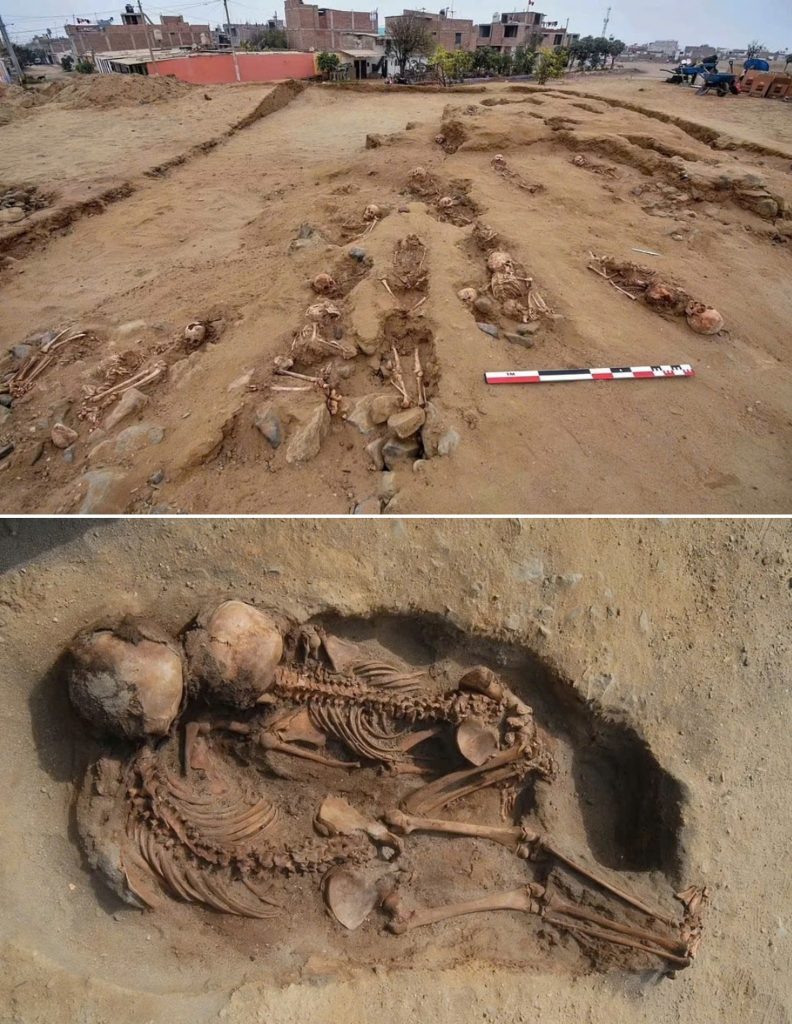
Among the remains, one grave in particular has drawn special attention. It contained five young girls laid out in a circular formation, with their heads touching in the center—an arrangement that has never been seen before at this site. Unlike most of the other children, who were buried with their feet pointing east and their heads facing west, in line with established Chimu rituals, this circular pattern stands out as a unique and potentially symbolic gesture. The arrangement suggests that these particular children may have played a special role in the ceremony, possibly as part of a specific religious offering or ritual not yet fully understood.
Researchers believe that the 76 newly discovered remains were buried as part of six distinct sacrificial events, carried out between the years 1050 and 1500 AD. The burials were found across two large mounds, and the way the bodies were positioned reflects a degree of consistency that points to ritual sacrifice as part of the Chimu’s broader religious system. These events likely spanned generations, which suggests that the practice of child sacrifice was a deeply rooted tradition that persisted throughout the life of the Chimu Empire.
The Chimu civilization, which rose to prominence around 900 AD after the decline of the earlier Moche culture, developed into one of the largest and most powerful pre-Columbian empires in Peru before being conquered by the Incas in the 15th century. Their capital, Chan Chan, located near modern-day Trujillo, was a sprawling metropolis known for its intricate adobe structures and highly organized urban planning. The Chimu are widely recognized for their advances in agriculture, particularly in irrigation systems that allowed them to thrive along Peru’s arid northern coast. However, alongside these innovations, they also practiced rituals that modern observers find disturbing—including the large-scale sacrifice of children.
While the precise reasons for these sacrifices are still debated, most archaeologists agree that they were likely carried out as offerings to appease or communicate with the gods. The Chimu appear to have believed that sacrificing children—perhaps viewed as pure or sacred beings—could influence natural events or bring blessings upon their people. These offerings may have been intended to combat environmental disasters, such as El Niño-driven floods or prolonged droughts, both of which would have had devastating effects on an agriculturally dependent society.
Archaeological investigations into the methods used in these sacrifices are ongoing. Some of the remains show signs of incisions and trauma, indicating that their hearts may have been removed during the ritual. This aligns with other discoveries made in 2019 at a nearby site, where the remains of over 140 children aged between 5 and 14 were found. Many of those children also appeared to have undergone heart removal, suggesting that this practice was not isolated but part of a systematic ritual behavior. The brutal nature of these acts, especially when viewed through a modern lens, has shocked researchers and sparked ongoing debate about the meaning behind such violence.
Despite its grim nature, this discovery provides archaeologists with an extraordinary opportunity to explore and better understand the Chimu worldview. These sacrifices were not random acts of cruelty but were embedded in a spiritual and cultural system that perceived them as necessary, perhaps even noble, in the context of the times. Each child may have represented a bridge between the human world and the divine, their lives offered to ensure the survival or prosperity of the community.
Today, the legacy of the Chimu lives on in both their technological achievements and the haunting evidence of their religious customs. Their sophisticated metalwork, intricate ceramics, and large-scale city planning continue to inspire admiration from scholars. At the same time, their sacrificial traditions compel us to reflect on the complexities of ancient belief systems and how deeply rooted faith can shape the moral compass of a society.
As archaeologists continue to examine the Pampa La Cruz site and other areas nearby, they hope to uncover further clues about the Chimu civilization’s spiritual beliefs, social organization, and the specific circumstances that may have led to such devastating rituals. Every new burial site, every artifact, and every skeleton adds a layer to our understanding of this lost culture—a culture that, for all its advancements, also embraced practices that speak to the darkest corners of human history.
The discovery of these 76 child skeletons does more than just raise the number of known victims. It deepens our appreciation of the scale and intent behind Chimu religious ceremonies. It also forces us to confront uncomfortable questions about the human capacity for both creativity and cruelty, about how civilizations reconcile the beauty of their innovations with the violence of their rituals.
Ultimately, these findings serve as a powerful reminder of the duality present in ancient civilizations: brilliant in their achievements, yet often governed by fear, faith, and sacrifice. As we piece together the fragments of the past, we are left not only with awe but with a profound sense of empathy and reflection—for the lives that were lost, for the cultures that created them, and for the lessons they still offer us today.
